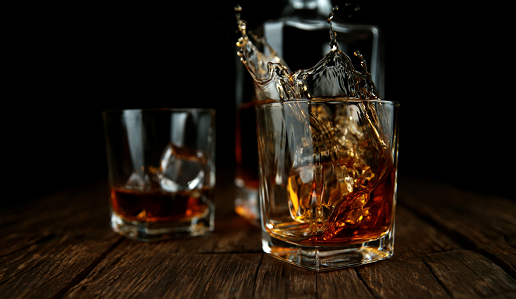Italian e-consumers’ favorite distilled spirits

For 2021, Federvini's latest report showed a sectoral value of about €4 billion in sales for spirits and liqueurs (so-called spirits), of which €1.6 billion will be exported (doubled in the last five years) and €2.4 billion on the domestic market. But what are Italians' favorite spirits when it comes to online shopping?
Witailer, one of Italy's largest consultancy agencies for sales on the main marketplaces and e-commerce, and Mr. Dee Still, the beverage world's first shoppable magazine, have tried to answer this question. The objective of the study was to offer a clear view of Italians' online research and purchasing habits regarding spirits, a seasonal category that peaks especially in the winter period.
Nielsen data showed how the spirits market took off during and after 2020, with an increase in online sales of almost +250%. It is a trend that does not seem to want to stop: in fact, a recent report by IWSR Drinks Market Analysis estimated that the value of this industry could reach $40 billion by 2024.
But what are the spirits - that is, those alcoholic beverages obtained from the distillation of grains, fruits or vegetables that have already undergone alcoholic fermentation (thus Gin, Whiskey, Rum, Liqueurs, Bitters) - preferred by Italians, when it comes to online shopping? At the level of search volumes, the most searched category by far is Gin; followed by Rum and Whisky.
Seasonality of searches: no longer just during the "peak" period
In general, spirits show themselves as a seasonal category that peaks in searches and purchases during November, December, and January (thus coinciding with the winter holidays and especially Christmas and New Year). However, Italian consumers are also showing increasing interest during the rest of the year, for example, during the month of September, as Mr. Dee Still noted.
Italians' favorite brands and established leadership
Italians have well-defined tastes and preferences for any type of spirits. For bitters, among the brands that are the most popular are Jefferson, Rupes, Amaro del Capo Riserva; for Gin we talk about Tanqueray, Bombay, Roku; for Rum Zacapa, Don Papa, Diplomatico; for Whisky Jack Daniel's, Talisker, Macallan. In addition, that of Gin is an established trend not only on Amazon, a generalist marketplace par excellence, but also on industry pure-players: on Mr. Dee Still, for example, again in the reporting period, it turns out to be one of the most relevant categories.
But what are the differences in purchases between a generalist marketplace and a specialized one?
The difference between a marketplace such as Amazon and a vertical pure-player such as Mr. Dee Still lies in the type of product being searched for: while searches for less niche products that enjoy high awareness (such as Baileys for liquor or Jack Daniel's for Whiskey) prevail on Amazon, on specialized platforms such as Mr. Dee Still, historical products in limited editions are favored, but also appealing products in emerging categories (such as tequila) and that are difficult to find on more generalist online shops.
An explanatory example in this regard is the category of Bitters, which on Amazon.it is very unimportant in terms of search volume, and privileges well-known brands such as Amaro Del Capo or Jefferson, while on Mr. Dee Still it represents one of the most interesting categories, with searches for local bitters such as Amaro Camatti and Mirto Silvio Carta historical recipe.
Do Italians search directly for the brand or do they prefer generic searches?
Despite the fact that searches for products of well-known brands prevail on Amazon.co.uk, some sub-categories of spirits still maintain a large share of generic searches (meaning that users search for products through generic keywords, often of product description). And this is precisely the case with the less developed sub-categories on Amazon.co.uk, such as Bitters and Spirits, which maintain percentages of generic searches exceeding 80 percent.
Generally speaking, the higher the percentage of branded searches (i.e., when users type the specific brand they want to buy into the search bar directly), the more the sub-category will be dominated by top-of-mind brands: it will therefore be a more concentrated category and less easy for a new player to preside over. For example, the Rum sub-category has the highest preponderance of branded searches.
Always interesting in this respect is the Gin sub-category, which despite maintaining category leadership in terms of search volume, is composed of less than 20 percent branded searches. This denotes a big opportunity for eventual market entry by manufacturers in the sector, who could strategically exploit this existing gap between supply and demand.

 Italiano
Italiano







